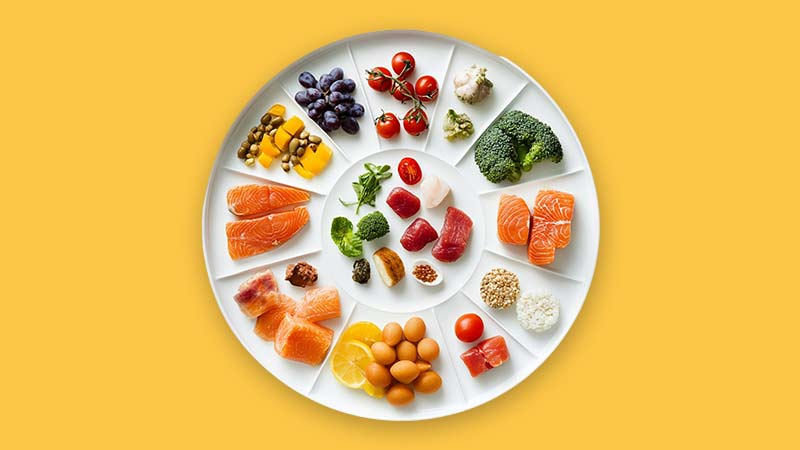Eating well doesn’t have to be complicated. Building a balanced plate ensures you get the right mix of nutrients to fuel your body, maintain energy, and support overall health. With simple guidelines and delicious recipes, creating balanced meals can be easy, satisfying, and tasty.
🌿 The Components of a Balanced Plate
A balanced plate typically includes:
- Vegetables & Fruits (Half Your Plate)
- Provides fiber, vitamins, minerals, and antioxidants.
- Examples: leafy greens, bell peppers, berries, apples, carrots.
- Protein (One-Quarter of Your Plate)
- Supports muscles, hormones, and overall body repair.
- Examples: chicken, fish, tofu, legumes, eggs, cheese.
- Whole Grains or Starchy Vegetables (One-Quarter of Your Plate)
- Supplies energy and essential nutrients.
- Examples: brown rice, quinoa, sweet potatoes, whole-wheat pasta.
- Healthy Fats (Small Portion)
- Essential for brain function and nutrient absorption.
- Examples: olive oil, avocado, nuts, seeds.
🥑 Tips for Building a Balanced Plate
- Prioritize variety: Aim for multiple colours and textures.
- Control portions: Use your hand as a guide — palm-sized protein, fist-sized grains, and a generous scoop of veggies.
- Include fibre: Helps digestion and keeps you full longer.
- Hydrate: Water, herbal teas, or infused water complement meals.
- Season smartly: Use herbs and spices instead of excess salt or sugar.
🍽 Sample Balanced Meals
1. Grilled Chicken & Veggie Bowl
- Protein: Grilled chicken breast
- Veggies: Roasted broccoli, bell peppers, and carrots
- Grains: Quinoa
- Healthy Fat: Drizzle of olive oil and a sprinkle of pumpkin seeds
2. Lentil & Spinach Salad
- Protein: Lentils
- Veggies: Baby spinach, cherry tomatoes, cucumber
- Grains: Bulgur or farro
- Healthy Fat: Avocado slices and lemon-tahini dressing
3. Salmon & Sweet Potato Plate
- Protein: Oven-baked salmon
- Veggies: Steamed green beans and roasted asparagus
- Grains/Starch: Mashed sweet potato
- Healthy Fat: A spoonful of pesto or olive oil drizzle
4. Vegetarian Stir-Fry
- Protein: Tofu or tempeh
- Veggies: Broccoli, snow peas, carrots, bell peppers
- Grains: Brown rice or whole-wheat noodles
- Healthy Fat: Sesame seeds and sesame oil
💡 Bonus Tips
- Prep ahead: Chop veggies and cook grains in bulk to make building plates faster.
- Mix proteins: Combine legumes, grains, and nuts for complete plant-based protein.
- Season creatively: Fresh herbs, citrus, and spices add flavour without extra calories.
- Mindful eating: Take time to enjoy each meal — it supports digestion and satiety.
❤️ Final Thoughts
Building a balanced plate is all about simple, mindful choices that nourish your body while keeping meals delicious and satisfying. By including a variety of vegetables, proteins, whole grains, and healthy fats, you can create meals that energize you, support your health, and are enjoyable to eat.
With these tips and recipes, balanced eating doesn’t feel restrictive — it feels vibrant, colourful, and achievable every day.

